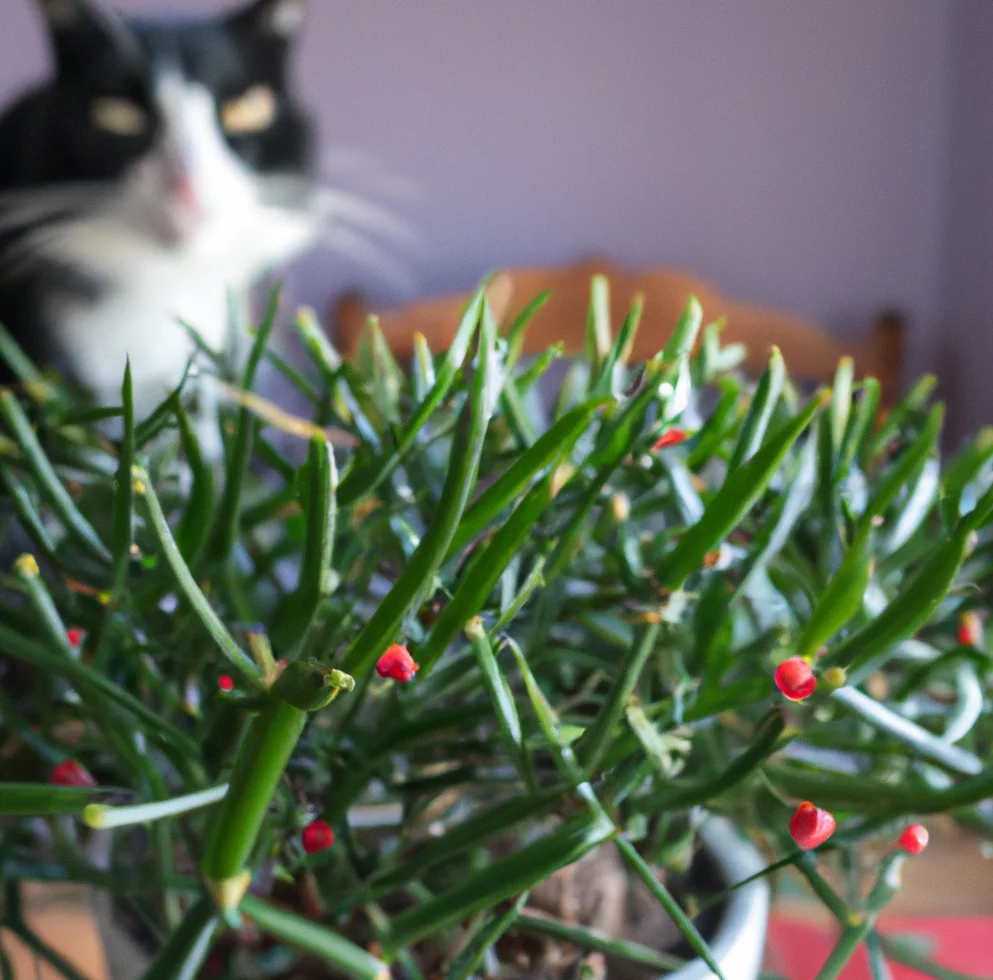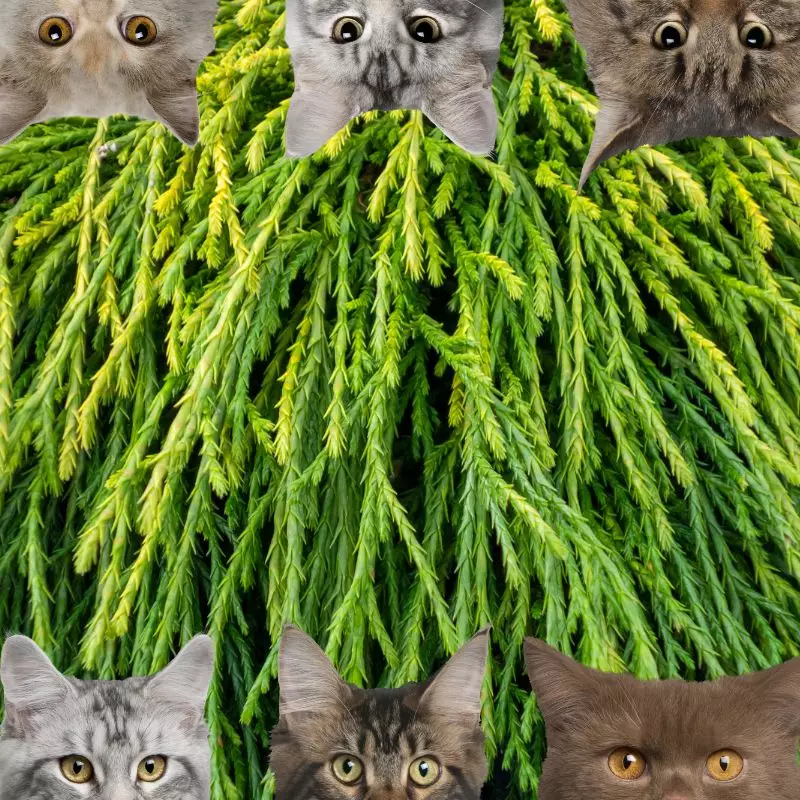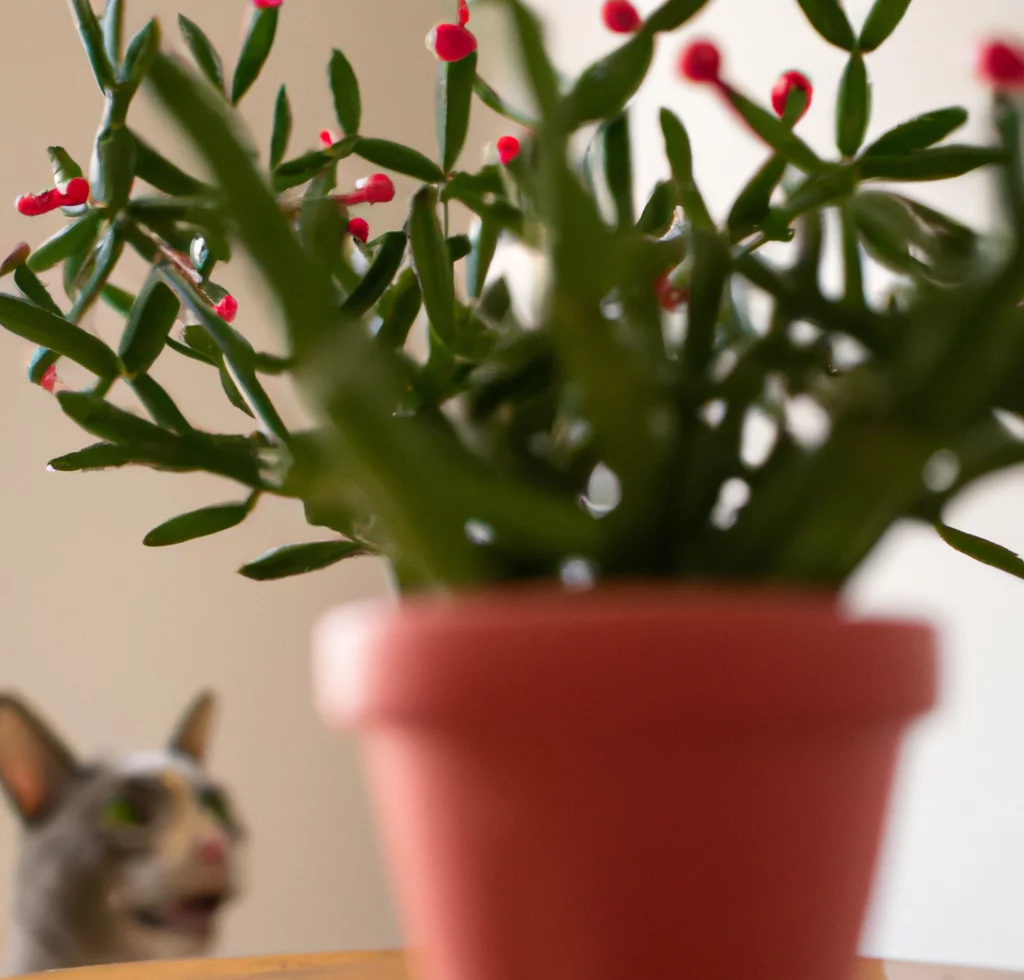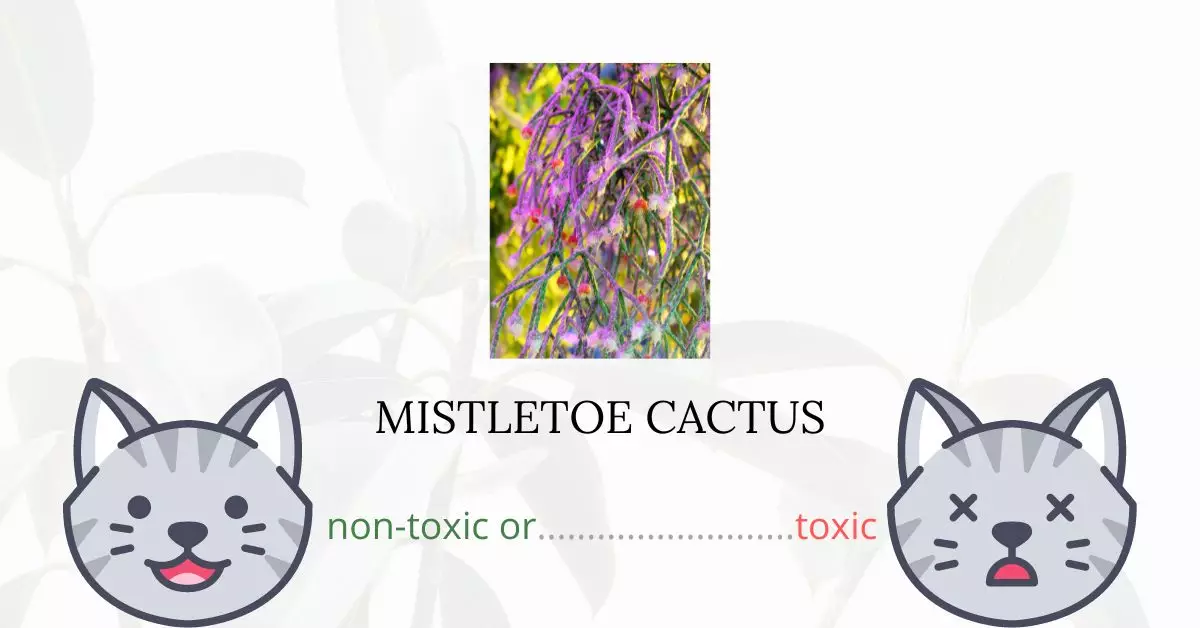No, Mistletoe Cactus is not toxic for cats.
This article is the result of collaborative efforts with a team of experienced DVMs (doctors of veterinary medicine). Thanks to their insights, we provide accurate and up-to-date information on the potential risks associated with various plants, particularly in this case, the Mistletoe Cactus and its effects on feline companions. Additionally, we have extensively researched high-authority websites, including ASPCA and PetMD, to ensure our findings are well-informed and thorough.
For those looking for pet-safe plants, Mistletoe cacti, with their stunning leaf shapes and growth patterns, are not only safe but also an excellent choice for bright indoor displays.
Can Cats Eat Mistletoe Cactus?

Pets are generally regarded as safe around mistletoe cactus. Just as some people have allergies to nuts and bananas, so too may your pet, who may react to specific plants differently from other pets. Because excessive ingestion of even seemingly harmless plants, like grass, can result in vomiting and diarrhea, it is always safer to keep your pet from eating big amounts of any plant. If you are worried, talk to your veterinarian.
What is a Mistletoe Cactus?

Tropical succulent mistletoe cactus is found in rain forests and warm places like South Africa, Mexico, and Brazil. This plant needs wet soil, dark light, and shade or partial shade. It is an elegant epiphyte succulent, often known as a spaghetti cactus, with long branches resembling threads, many creamy-white flowers, and fruits resembling mistletoe.
Large hanging clusters, 1 to 4 meters long, are formed by it (occasionally up to 9 meters). It contains succulent stems, like the majority of cacti, however, the mistletoe cactus’ stems are weak, short, narrow, and pendant.
The plant is typically found indoors and can either be potted in a decent cactus mix or is simply mounted on a piece of bark like an orchid. It blooms irregularly throughout the season, with the finest flushes occurring in mid-spring.
Keeping Cats Away From Mistletoe Cactus

Your plants should be out of reach. Hanging planters that are fastened to the ceiling and are out of reach of prying eyes and tongues make the ideal location.
The second best choice, if you must leave your plants on the floor, is to use deterrent sprays. Because cats naturally dislike citrus and acidic aromas, preparing a spray of vinegar and water or citrus juice and lightly misting or wiping it on the leaves can frequently deter them. This combination shouldn’t be poured straight into the plant because doing so could destroy it.
Discipline is the last component. Many animals don’t enjoy loud noises, so keeping a can of shakeable marbles nearby will prevent your cat from destroying your plants. Another excellent approach to stop your pet from eating plants is to use a spray bottle filled with water and give it a few light sprays when you see the irritating behavior.
Plants to Avoid For Your Cats
If you are a cat owner and unsure if the plants growing in your yard are harmful to your cats, check out this list of toxic plants for cats. You can also check our list of non-toxic plants for cats.





